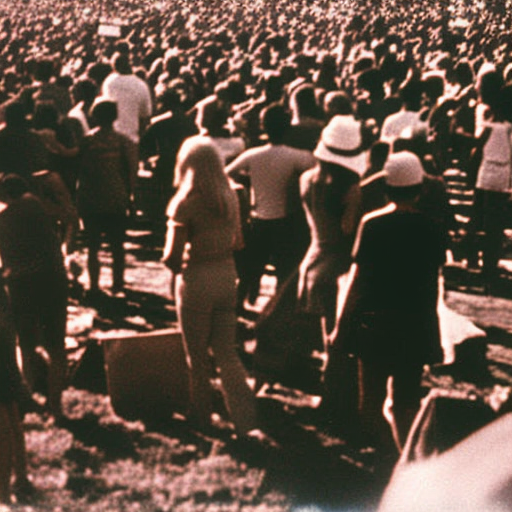Summary:
The Woodstock Festival, held in August 1969, was a pivotal moment in American counterculture and music history. It was a three-day music festival held in Bethel, New York, that attracted an estimated 400,000 attendees. The festival featured iconic performances by some of the biggest names in rock and folk music, including Jimi Hendrix, Janis Joplin, The Who, and Crosby, Stills, Nash & Young. Woodstock became a symbol of the 1960s counterculture movement, promoting peace, love, and music.
The Origins:
The idea for the Woodstock Festival originated from four young entrepreneurs: John Roberts, Joel Rosenman, Artie Kornfeld, and Michael Lang. They envisioned a music festival that would bring together the best musicians of the time and provide a platform for promoting peace and unity. Initially, the festival was planned to be held in Wallkill, New York, but due to opposition from local residents, the organizers had to find an alternative location.
The Festival:
Eventually, Max Yasgur, a dairy farmer from Bethel, agreed to lease his land for the festival. The organizers faced numerous challenges in preparing for the event, including securing permits, building stages, and ensuring adequate facilities for the massive crowd. Despite these obstacles, the festival opened on August 15, 1969.
The Performances:
Over the course of three days, the Woodstock Festival showcased 32 acts, ranging from folk and rock to blues and soul. Some of the most memorable performances included Jimi Hendrix’s electrifying rendition of “The Star-Spangled Banner,” Janis Joplin’s soulful performance, and The Who’s explosive set. The festival also featured emerging artists such as Santana, Joe Cocker, and Crosby, Stills, Nash & Young, who went on to achieve great success in the following years.
The Challenges:
The massive turnout at Woodstock posed significant challenges for the organizers. The festival faced food shortages, inadequate medical facilities, and heavy rain that turned the grounds into a muddy mess. However, the spirit of camaraderie and the shared experience of the attendees helped overcome these challenges. The festival became a symbol of peace and love, with attendees embracing the counterculture ideals of the era.
The Legacy:
Woodstock left a lasting impact on American culture and music history. It symbolized the spirit of the 1960s counterculture movement, advocating for peace, love, and social change. The festival showcased the power of music to unite people and promote a sense of community. Woodstock also influenced the development of future music festivals, setting a precedent for large-scale outdoor events.
Conclusion:
The Woodstock Festival of 1969 was a defining moment in American history. It brought together hundreds of thousands of people from diverse backgrounds, united by their love for music and their desire for social change. The festival’s legacy continues to resonate, reminding us of the power of music to inspire and bring people together. Woodstock will forever be remembered as a symbol of the counterculture movement and a testament to the spirit of the 1960s.












